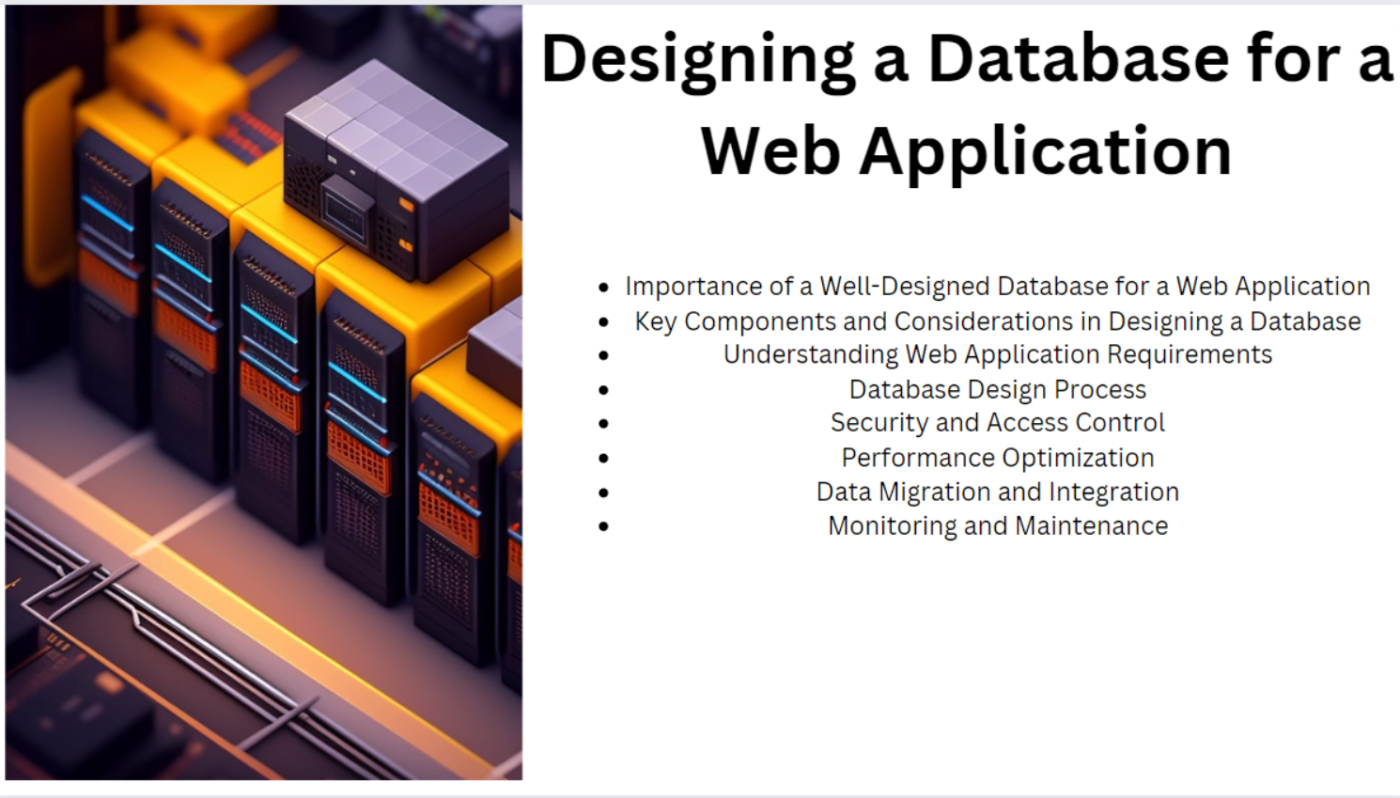Designing a Database for a Web Application
Introduction
When developing a web application, one of the critical components that require meticulous attention is the database design. A well-designed database sets the foundation for efficient data storage, retrieval, and management, ultimately impacting the overall performance and user experience of the application.

Importance of a Well-Designed Database for a Web Application
The importance of a well-designed database cannot be overstated. It serves as the backbone of the web application, facilitating seamless data storage and retrieval processes. A properly designed database ensures data integrity, security, and performance, all of which are essential for the success of the application.
Key Components and Considerations in Designing a Database
Designing a database for a web application involves considering various key components such as data model definition, normalization, data types selection, relationships, security, performance optimization, data migration, integration, monitoring, and maintenance. Each of these components plays a crucial role in shaping the database to meet the specific needs of the web application.
Understanding Web Application Requirements
Before embarking on the database design process, it is essential to thoroughly understand the requirements of the web application. This includes identifying the specific functionality and features that the application will offer, as well as analyzing the data storage and retrieval needs. Understanding these requirements guides the design process and ensures that the database aligns with the application’s objectives.
Database Design Process
The database design process encompasses defining the data model based on the application requirements, normalizing the database schema for optimal efficiency, selecting appropriate data types, and incorporating relationships and constraints to maintain data integrity. This phase lays the groundwork for a robust database structure that can effectively support the web application’s data management needs.
Security and Access Control
Implementing strong security measures and access control mechanisms is paramount in database design. This involves user authentication, authorization, encryption of sensitive data, and compliance with data privacy regulations. By addressing security from the early stages of design, the database can maintain the confidentiality and integrity of the application’s data.
Performance Optimization
To ensure optimal performance, considerations such as indexing strategies for query performance, utilizing caching mechanisms for frequently accessed data, and scaling the database architecture to accommodate increasing workload are essential. A well-designed database will optimize data access and retrieval, contributing to a smooth and responsive web application experience.
Data Migration and Integration
In many cases, web applications require migration of existing data into the new database and integration with third-party services or applications. Planning and executing these processes seamlessly is vital to ensure a smooth transition and continued functionality of the web application.
Monitoring and Maintenance
After the database is implemented, ongoing monitoring and maintenance become crucial. Implementing database monitoring tools, performing regular maintenance tasks such as backups, updates, and optimization, and having a disaster recovery plan in place are all part of ensuring the long-term health and performance of the database.
Conclusion
In conclusion, the importance of a well-designed database for a web application cannot be overstated. By carefully considering the key components and following best practices in the design process, developers can create a database that effectively supports the web application’s data management needs, security requirements, and performance goals.
Overall, designing a database for a web application is a multifaceted process that requires attention to detail, a deep understanding of the application’s requirements, and a commitment to ongoing maintenance and optimization.
| Component | Description |
| Data Model Definition | Defining the structure of the database based on the application’s specific data storage and retrieval requirements. |
| Normalization | Organizing the database schema to minimize redundancy and dependency, ensuring efficient data storage and retrieval. |
| Data Types Selection | Choosing appropriate data types for each field to accurately represent the data and optimize storage and retrieval efficiency. |
| Relationships | Establishing relationships between different tables to maintain data integrity and support complex data queries. |
| Security | Implementing measures such as user authentication, authorization, and data encryption to protect the database from unauthorized access. |
| Performance Optimization | Employing indexing strategies, caching mechanisms, and database scaling to ensure fast and reliable data access and retrieval. |
| Data Migration and Integration | Planning and executing processes for migrating existing data into the new database and integrating with third-party services. |
| Monitoring and Maintenance | Utilizing monitoring tools, performing regular maintenance tasks, and having a disaster recovery plan to ensure ongoing database health. |





